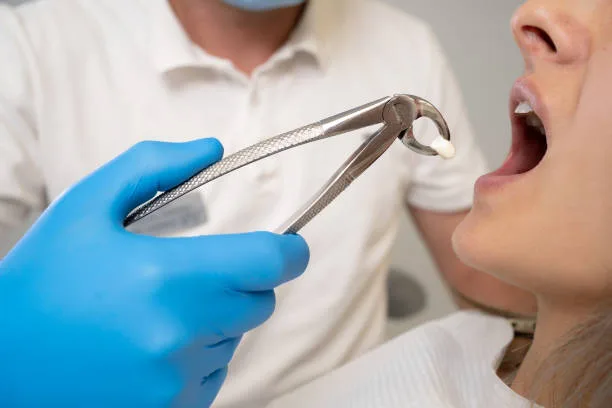Breaking a tooth can be a distressing experience, especially if it breaks off at the gum line. This situation often raises questions about the possibility of extraction. In this article, we will explore if a dentist can remove a tooth broken at the gum line. We will also cover what to expect during the procedure.
Understanding Tooth Breakage
Teeth can break for various reasons. Common causes include trauma, decay, or biting on something hard. When a tooth breaks off at the gum line, it often leaves the root intact in the gum. This type of breakage can cause pain, infection, and difficulty chewing.
Book Appointment Now
When Is Extraction Necessary?
A dentist might recommend extraction. It is for a tooth that is badly damaged and cannot be saved. This is often the case when a tooth breaks off at the gum line. Extraction helps prevent infection and relieves pain. It also creates space for a replacement tooth if needed.
What Happens If You Can’t Afford Dental Treatment in the UK?
The Extraction Procedure
Initial Examination
Before extracting a tooth, the dentist will conduct a thorough examination. They will take X-rays to assess the condition of the tooth and surrounding bone. This helps determine the best approach for extraction.
Numbing the Area
The dentist will first numb the area around the broken tooth. They use a local anaesthetic to ensure you do not feel pain during the procedure. This step is crucial for your comfort.
Removing the Tooth
Extracting a tooth broken at the gum line can be more complex than removing an intact tooth. The dentist might need to make a small incision in the gum to access the tooth root. They may also need to remove the tooth in sections to make the extraction easier.
Aftercare Instructions
Controlling Bleeding
After the extraction, the dentist will place a gauze pad over the extraction site. You will need to bite down gently on the gauze to control bleeding. This helps form a blood clot, which is essential for healing.
Managing Pain and Swelling
The dentist might prescribe pain medication or recommend over-the-counter pain relievers. Applying an ice pack to the outside of your cheek can help reduce swelling. Follow the dentist’s instructions to manage discomfort effectively.
Keeping the Area Clean
It’s important to keep the extraction site clean to prevent infection. Rinse your mouth gently with warm salt water starting the day after the extraction. Avoid vigorous rinsing, as this can dislodge the blood clot.
Eating and Drinking
Stick to soft foods and avoid hot drinks for the first few days. Gradually reintroduce solid foods as the area heals. Drink plenty of water to stay hydrated, but avoid using straws, as the sucking motion can dislodge the blood clot.
Potential Complications
While tooth extraction is generally safe, there are some potential complications. These include dry socket, infection, and prolonged bleeding. If you experience severe pain, swelling, or fever, contact your dentist immediately.
Alternatives to Extraction
In some cases, there might be alternatives to extraction. For example, if the tooth root is healthy, a dentist might suggest a root canal followed by placing a crown. This can save the remaining tooth structure. However, this depends on the extent of the damage and the overall health of the tooth.
Long-Term Care
Replacing the Extracted Tooth
If a tooth is pulled out, put in a replacement. This keeps proper chewing and stops other teeth from shifting. Options include dental implants, bridges, and partial dentures. Discuss these options with your dentist to find the best solution for your needs.
Preventing Future Breakages
To prevent future tooth breakages, maintain good oral hygiene. Brush and floss regularly to keep your teeth and gums healthy. Avoid chewing on hard objects like ice and be mindful of what you eat. Regular dental check-ups are also important to catch and address any issues early.
Conclusion
A dentist can indeed pull a tooth that is broken off at the gum line. The procedure may be more complex than a regular extraction. But, with proper care, you can ensure a smooth recovery. Understanding the process and following the dentist’s aftercare instructions will help you manage this situation effectively.
Take the Next Step with Bridge St Aesthetic and Dental Implant Clinic
If you have a broken tooth or other dental issue, don’t hesitate to seek professional help. At Bridge St Aesthetic and Dental Implant Clinic, we offer expert dental care. It is tailored to your needs. Are you looking for an NHS dentist in Aberdeen? Or do you need specialised treatment? Our experienced team is here to give the best solutions for your dental health. Contact us today to schedule a consultation. It is the first step to a healthier smile.






